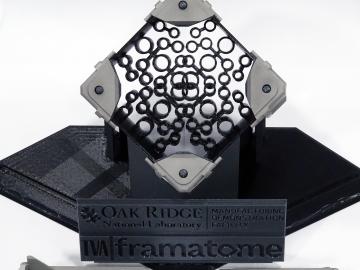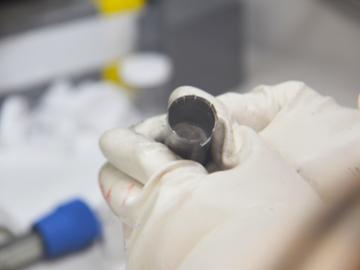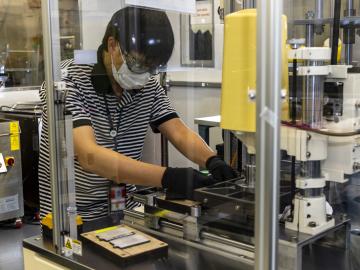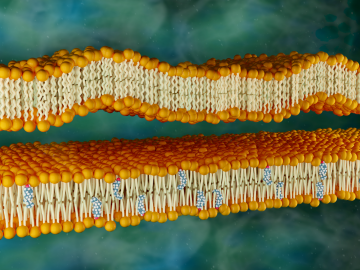
Filter News
Area of Research
- Biology and Environment (6)
- Computer Science (1)
- Energy Science (17)
- Fusion and Fission (3)
- Fusion Energy (4)
- Isotopes (2)
- Materials (9)
- Materials for Computing (2)
- National Security (3)
- Neutron Science (15)
- Nuclear Science and Technology (16)
- Nuclear Systems Modeling, Simulation and Validation (1)
- Supercomputing (9)
News Type
News Topics
- (-) Biomedical (17)
- (-) Clean Water (2)
- (-) Grid (6)
- (-) Machine Learning (5)
- (-) Neutron Science (18)
- (-) Nuclear Energy (25)
- (-) Space Exploration (2)
- (-) Transportation (9)
- 3-D Printing/Advanced Manufacturing (13)
- Advanced Reactors (10)
- Artificial Intelligence (6)
- Big Data (9)
- Bioenergy (7)
- Biology (4)
- Biotechnology (1)
- Chemical Sciences (2)
- Computer Science (26)
- Coronavirus (16)
- Cybersecurity (2)
- Energy Storage (14)
- Environment (16)
- Exascale Computing (2)
- Frontier (1)
- Fusion (13)
- High-Performance Computing (1)
- Isotopes (4)
- Materials Science (20)
- Mathematics (2)
- Mercury (1)
- Microscopy (5)
- Molten Salt (1)
- Nanotechnology (5)
- Physics (8)
- Polymers (3)
- Quantum Science (6)
- Security (2)
- Summit (10)
Media Contacts

Scientists from Oak Ridge National Laboratory used high-performance computing to create protein models that helped reveal how the outer membrane is tethered to the cell membrane in certain bacteria.

Pauling’s Rules is the standard model used to describe atomic arrangements in ordered materials. Neutron scattering experiments at Oak Ridge National Laboratory confirmed this approach can also be used to describe highly disordered materials.

Planning for a digitized, sustainable smart power grid is a challenge to which Suman Debnath is using not only his own applied mathematics expertise, but also the wider communal knowledge made possible by his revival of a local chapter of the IEEE professional society.

When Sandra Davern looks to the future, she sees individualized isotopes sent into the body with a specific target: cancer cells.

New capabilities and equipment recently installed at the Department of Energy’s Oak Ridge National Laboratory are bringing a creek right into the lab to advance understanding of mercury pollution and accelerate solutions.

The Transformational Challenge Reactor, or TCR, a microreactor built using 3D printing and other new advanced technologies, could be operational by 2024.

Irradiation may slow corrosion of alloys in molten salt, a team of Oak Ridge National Laboratory scientists has found in preliminary tests.

Scientists at Oak Ridge National Laboratory and the University of Tennessee designed and demonstrated a method to make carbon-based materials that can be used as electrodes compatible with a specific semiconductor circuitry.

Soteria Battery Innovation Group has exclusively licensed and optioned a technology developed by Oak Ridge National Laboratory designed to eliminate thermal runaway in lithium ion batteries due to mechanical damage.

Neutron scattering at ORNL has shown that cholesterol stiffens simple lipid membranes, a finding that may help us better understand the functioning of human cells.


